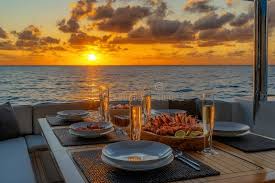Summer in Marbella: How to Do It Right (And Avoid the Crowds)
Marbella in high season blends Mediterranean glow with festival energy, but strategy is everything. To experience long beach days, smooth dinners, and stress‑free outings, you need smart timing, neighborhood know‑how, and a plan for heat and traffic. If you’re still orienting yourself, start with Where Is Marbella Beach for a quick sense of coastline and access points, then use this guide to structure a crowd‑proof itinerary that keeps the best of summer and skips the bottlenecks.
Summer in Marbella: How to Do It Right—Timing, Weather, and Daily Rhythm
Marbella’s microclimate (thanks to the Sierra Blanca) moderates extremes, but July–August still run hot and bustling. The secret is a two‑peak day: an active morning, a shaded siesta, then golden‑hour adventures. Expect average highs around 28–32°C, sea temperatures of 22–25°C, and strong UV from 11 a.m. to 4 p.m. Plan swimming, sport, and boat crossings before lunch; move culture, shopping, and dining to late afternoon and evening.
- Data snapshot
- Sunshine: ~300 days per year across the Costa del Sol.
- UV index: Often 9–10 at midday in July/August—seek shade, SPF 50, and UPF clothing.
- Best light: 7:30–10:30 a.m. and 6:30–9:30 p.m. for photos, paddle sessions, and walks.
“In August, the rarest luxury isn’t a sunbed—it’s empty air. Win the day by watching the sunrise and eating late.”
Where to Swim and Sun: Summer in Marbella Beach Strategy (And Avoid the Crowds)
The coastline runs from the dunes of Cabopino in the east to family‑friendly San Pedro in the west, with Marbella’s center and Puerto Banús in between. Each stretch has a different rhythm in peak months.
- Cabopino & Artola Dunes (East): Protected dunes, broad sands, and clearer water in morning light. Park early at Cabopino Marina and walk the boardwalk to quieter zones. Respect fenced dune areas—stay on paths.
- Elviria (Nikki Beach zone): Fine sand and easy entries; go before 10 a.m. or after 6 p.m. for easier parking and calmer scenes.
- Marbella Town Beaches (La Fontanilla, Casablanca): Super convenient, with chiringuitos every few hundred meters. Expect crowds midday; reserve sunbeds or arrive early with a lightweight umbrella.
- Puerto Banús: Great for people‑watching, not solitude. Best at early swim times or late for a stroll and a gelato.
- San Pedro de Alcántara: Wide promenades, play areas, and a relaxed, local feel. A winning option for families at sunset.
Crowd‑dodging rules of thumb:
- Arrive on foot or by bike along the Paseo Marítimo for central beaches; you’ll skip parking games.
- Choose leeward beaches based on wind; easterlies roughen east, so shift west that day.
- Book sunbeds on busy weekends; bring a compact shade if you prefer freedom.
Booking Smart: Summer in Marbella—Villas, Hotels, Beach Clubs, and Restaurants
High season demand spikes for south‑facing terraces, beachfront rooms, and top beach clubs. Book strategically and you’ll swap lines for leisure.
- Lodging: Reserve 6–10 weeks ahead for July–August. South‑ or southwest‑facing terraces capture longer evening sun and better sunsets.
- Beach clubs: Premium daybeds go first. Weekday reservations are easier; aim for late‑afternoon slots (4–8 p.m.) when heat fades and DJs warm up.
- Restaurants: Sunset seating (8:30–9:30 p.m. in summer) sells out. Book waterside tables 2–5 days ahead; try lunch at marquee kitchens to dodge dinner crowds.
- Cancellation policies: Heat waves, wind, and events can shift plans. Choose flexible rates where possible—your peace buffer.
Pro move: Anchor your plans around golden hour. Schedule chef’s tables or seafood grills right after a late swim, and walk the promenade to digest. You’ll ride the wave of Marbella at its best light.
Getting Around in Peak Season: Transport and Parking Hacks
Traffic concentrates late morning and early evening on the A‑7 coastal road and near Puerto Banús. Save time and sanity with a multi‑modal plan.
- Walk or cycle the Paseo Marítimo: The promenade runs for kilometers; e‑bikes reduce sweat and parking stress.
- Rideshares and taxis: Cabify operates in the area; prebook for dinner rush. Taxis are plentiful around Banús, but queues build after midnight.
- Driving: The AP‑7 toll road bypasses congestion for longer hops. For the A‑7, select surface streets for the last kilometer to beach clubs—follow signs to municipal lots.
- Parking: Arrive before 10 a.m. for beach parking, or target 6–7 p.m. turnover as daybeds empty.
Safety note: Hydrate and shade cars—interior temps soar. Keep a windshield shade and a 1.5L water bottle per passenger.
Health, Heat, and Sea: How to Do Summer in Marbella Right
Hot, dry afternoons and reflective sand make protection non‑negotiable. Think systems, not just sunscreen.
- Sun strategy: UPF shirts, wide‑brim hats, polarized sunglasses, SPF 50 reapplied every 2 hours. Use mineral formulas in the sea; they’re kinder to skin and ecosystems.
- Hydration: Target 2–3 liters per adult per day in heat. Add electrolytes if you’re active or dining later.
- Sea safety: Mornings are calmest. Observe flag systems; avoid inflatables offshore on windy days. Wear water shoes for rocky sections east of Cabopino and around small coves.
Events and Crowd Patterns: Summer in Marbella—Know the Calendar
Summer brings marquee draws that shift traffic and availability.
- Starlite Festival (July–Aug): Open‑air concerts in a quarry above Marbella; spectacular, but dinner and traffic patterns change on show nights. Book parking or transfers with tickets.
- Ferragosto (mid‑August): Italian holidays swell Banús and prime beaches; use early mornings and west‑coast sunsets to breathe.
- Regattas and beach volleyball weekends: Expect pop‑up crowd peaks; book sunbeds or aim for adjacent beaches that same morning.
Tip: Plan “city days” (Málaga museums, Ronda wineries) on especially hot or event‑heavy beach days. Air‑conditioned galleries and highland breezes are a welcome reset.
Costs “Mini‑Chart”: What to Expect in Peak Months
- Sunbed + umbrella (2 pax): €20–€60/day depending on venue proximity and brand.
- Daybed at beach club: €120–€300+ minimum spend on weekends; less midweek and late‑afternoon slots.
- E‑bike rental: €25–€45/day; scooters €35–€65/day; taxis in core zones €8–€18 typical hops.
- Yacht charter (half day): €1,800–€5,000+ plus fuel/catering for motor yachts; ribs are cheaper.
- Mid‑range dinner for two (seafront): €60–€120 without premium wines; upscale €150–€300.
Prices swing with location and event calendars; late‑afternoon bookings often lower minimums without sacrificing vibe.
Food and Dining Strategy: Eat Well, Wait Less
- Lunch late, dine late: 2:30–3:30 p.m. lunches miss peak; 9–10 p.m. dinners catch evening breeze and reduced queues.
- Reserve smart: Sunset‑facing terraces and chiringuitos need 2–5 days’ notice in August.
- Provenance wins: Look for espeto sardines, local tomatoes, Almadraba bluefin in season, and Sierras de Málaga whites. Ask for Andalusian olive oils; peppery Picual sings with salads and grilled fish.
Sustainable Summer in Marbella: Enjoy Lightly
- Dunes and seagrass matter: Stay on marked paths at Artola; request captains use mooring buoys rather than anchoring over Posidonia meadows.
- Ditch disposables: Bring refillable bottles and a small tote; many chiringuitos refill water on request.
- Local economy: Tip fairly, favor local producers in markets, and choose operators with clear environmental policies.
Conclusion: Summer in Marbella—How to Do It Right (And Avoid the Crowds)
With a sunrise‑to‑sunset rhythm, targeted beach choices, smart bookings, and cool‑headed transport plans, you can keep everything you love about summer in Marbella and sidestep the rest. Wake early, chase golden hour, eat late, and use the calendar to your advantage. Pair that with a quick orientation from Where Is Marbella Beach, and “Summer in Marbella: How to Do It Right (And Avoid the Crowds)” becomes more than a promise—it’s your lived experience of light, breeze, and uncrowded moments in one of Europe’s favorite seaside towns.







